'Prettiest country': Newly preserved Creek Ranch symbolizes natural Florida
LAKE HATCHINEHA — Longtime Floridians will recall that in decades past, before Central Florida became a tourist mecca peppered with housing developments from the Atlantic to the Gulf, venturing outdoors often meant hearing the sweetly rising phrase: “Bob-white!”
The call of the northern bobwhite — a dainty, mostly earthbound quail — is heard much more rarely these days, as the clearing and paving of countless Florida acres has relegated the birds to remote woods.
In that regard and others, a visit to Creek Legacy Ranch produces a sensation of sliding back decades into a less crowded Florida. During a recent tour of the 1,342-acre property in eastern Polk County, co-owner Reggie Baxter excitedly pointed toward a shrubby zone at the edge of a cow pasture, reporting that he had seen a covey of quail take cover in a cluster of winter-browned bushes.
Alarmed by the encroachment of humans, several of the quail soon spurted upward and winged their way to safety in a flash of sienna and black. Minutes later, a pair that had remained hidden in the thicket emerged and darted in jerky fashion across a stretch of pasture.
It was quiet enough to hear the quail’s feet scrabbling across the ground — another quality that distinguishes Creek Ranch from most areas in increasingly crowded and frenzied Central Florida.
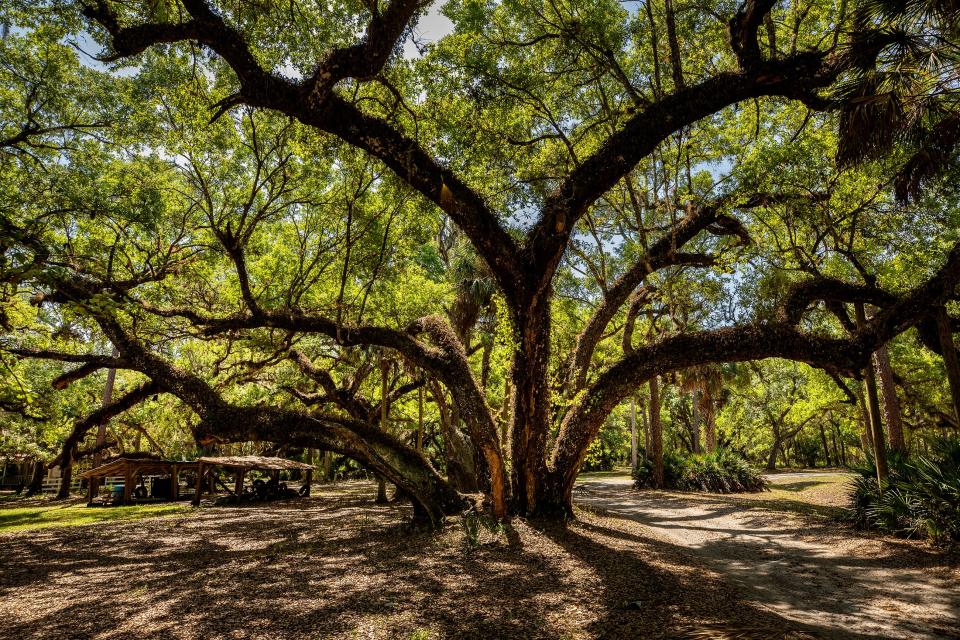
Some 240 miles away in Tallahassee, the Florida Cabinet on Tuesday morning voted to approve the state’s purchase of Creek Ranch through the Florida Forever program, a decades-old conservation initiative. The commitment of $36.1 million means that the property just west of Lake Hatchineha will not come to resemble so much surrounding it in the fast-developing Poinciana area.
Baxter and his real-estate partner, Bob Adams, bought the cattle ranch in 2022, and they proposed developing the western section, away from the lake. They gained approval from the Polk County Commission in September for a change in land-use to allow the construction of 1,876 homes, plus retail space, on roughly 600 acres.
The plan called for retaining a wetland mitigation bank in the center of the tract, while Baxter would continue to occupy a secluded house on the eastern section. The proposed development sparked ardent opposition from residents along Lake Hatchineha Road, an area that remains mostly rural. A group of residents filed a lawsuit in October, seeking to overturn the County Commission’s land-use revision.
Adams credited land broker Dean Saunders of Lakeland with suggesting that he and Baxter pursue a deal with the state through Florida Forever. Earlier this month, the two sides agreed on a contract, which became official with the vote of the Cabinet, comprising Gov. Ron DeSantis, Commissioner of Agriculture Wilton Simpson, Attorney General Ashley Moody and Chief Financial Officer Jimmy Patronis.
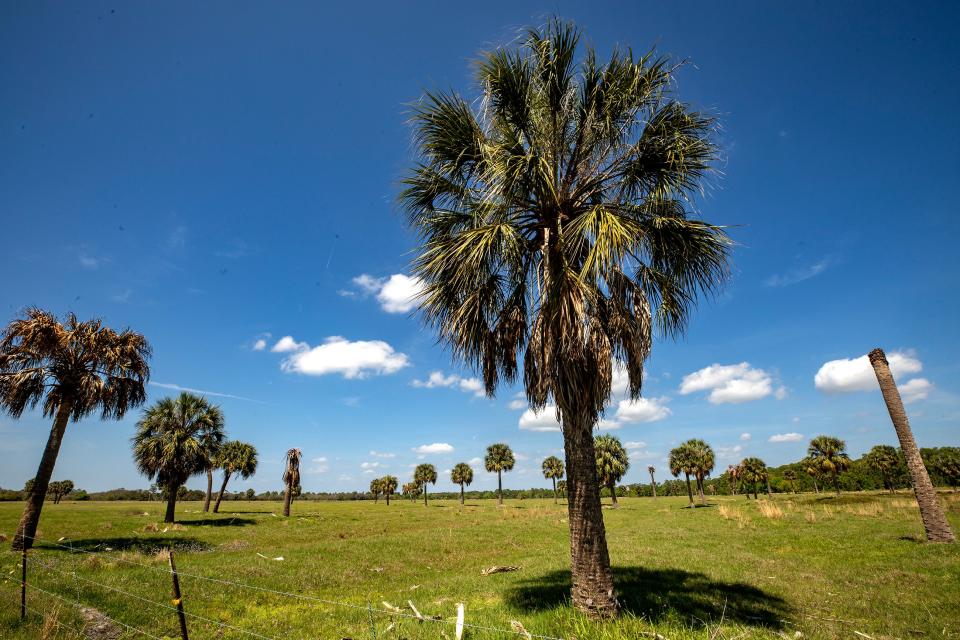
Before Baxter and Adams reached a deal with state officials, they considered selling at least part of the property to Polk County, which operates a conservation lands program funded by property taxes. A committee studied Creek Ranch and ranked it first among five parcels recommended for consideration, reflecting its importance based on habitat quality and location.
The committee’s Technical Assistance Group conducted field trips and reported the presence of such threatened or protected species as fox squirrels, sand skinks and gopher tortoises.
Jeremiah “JT” Thompson, a senior adviser with SVN Saunders Ralston Dantzler, said the purchase ensures that most of Lake Hatchineha will be bordered by conservation land, including Allen David Broussard Catfish Creek Preserve State Park and Kissimmee Chain of Lakes Wildlife Management Area. The property includes about 1,000 feet of shoreline on the 5,872-acre Lake Hatchineha.
As Thompson noted, Lake Hatchineha and the surrounding area form the headwaters of the Florida Everglades, the source of water that flows south to the tip of the peninsula.
“When you go around Lake Hatchineha, that whole water system is draining south toward the Everglades,” Thompson said. “What’s great is that whole watershed, more or less, will have a ring of conservation, if you will, around the lake.
Creek Legacy Ranch is located within the Lake Hatchineha Watershed, which ranks 24th in the Florida Forever Critical Natural Lands project category.
A management prospectus prepared by the Florida Fish and Wildlife Conservation Commission states: “The CR (property) fills an important gap in the landscape of conservation lands in the southwest region of Florida that are critical to water quality protection and the preservation of wildlife and natural communities. Protecting land in this area is critical as the CR is located immediately adjacent to areas experiencing intensive development and development pressures.”
Abundance of history
The wild tract along Lake Hatchineha has hosted cattle ranching going well back into the previous century. The Exposition Company, a Georgia outfit that originated in the 1860s, purchased a collection of tracts in 1961 to form the current property boundaries.
Jane Cocke Black was a teenager when her father, Emory Cocke, completed the transaction. Black, an Atlanta resident, said the family never made the site its primary home but visited often on vacations.
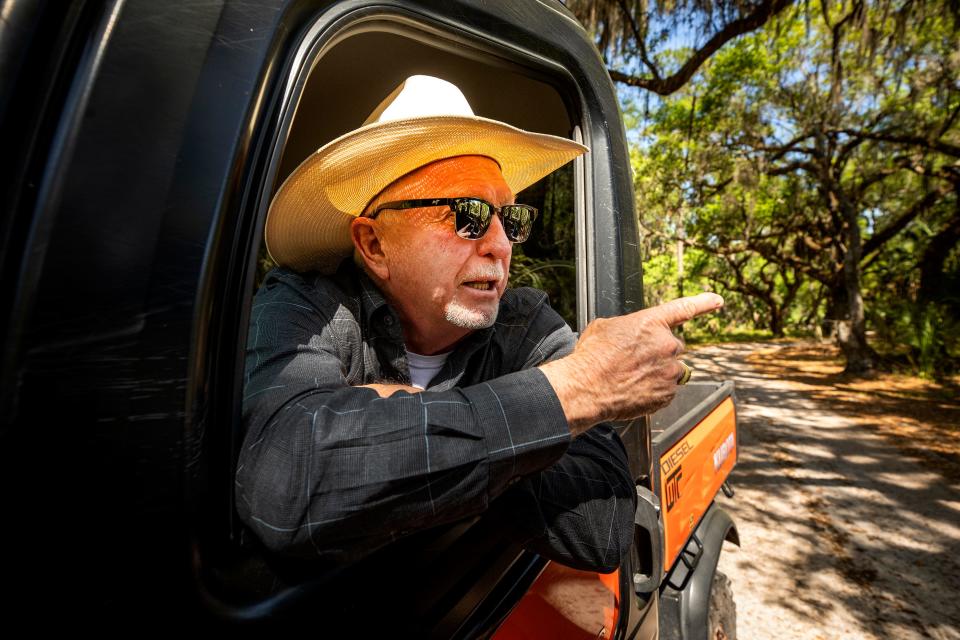
Black said that Lake Hatchineha Road in the early 1960s remained unpaved all the way from U.S. 27 to a fish camp just beyond what became the entrance to the property. The family named the tract Creek Ranch to honor the Native American tribe whose members were believed to have occupied the shore of Lake Hatchineha.
Her son, Jim, recalled seeing mounds on the land. He also talked of finding arrowheads, sharpened stones used for hunting, along the shore of Deer Lake.
The Cocke family directed the construction of a dike around the lakefront pasture, which regularly flooded during the rainy season, Black said. Her mother, Fanny Cocke, advised a young architect from Winter Haven, B.T. Jones, on the design of what became an 11,000-square-foot, seven-bedroom lodge.
The family referred to the massive structure as “the Bunkhouse,” in keeping with the ranch theme, Black said. The house features ceiling-high windows in most rooms, yielding views of a pasture to the front and Lake Hatchineha, seen through a stand of cypress trees, to the rear.
The Black family brought in cattle and horses and hired a ranch manager, Claude Bronson, who lived in a cabin on the property with his wife and two daughters “with the stipulation that he would bring us fresh vegetables from his garden when we were in residence,” Jane Black recalled in an email.
Asana Properties, a company based in Coral Gables with executives from Venezuela, bought the parcel in 2015, paying $8.15 million, according to Polk County property records.
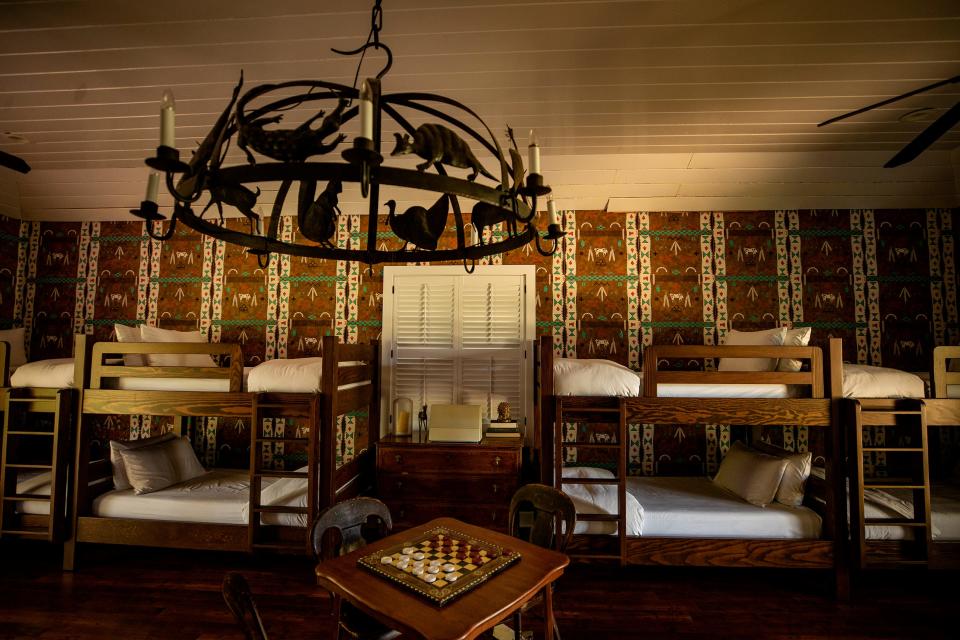
Baxter and Adams, business partners since 2019, paid $12.4 million for the property two years ago, renaming it Creek Legacy Ranch and agreeing that Baxter and his partner, Susie Stripling, would occupy the house. On a recent morning, Stripling led a tour of the stunning, two-story structure, dominated by a cavernous, sunken living room with lofty ceilings, a wide fireplace and bookshelves lining one wall.
Leatherbound books on a table in the living room relate the history of the home and list wildlife seen on the property, including such rarities as Sherman’s fox squirrels, Eastern indigo snakes and red-headed woodpeckers.
Sliding glass doors on the room’s eastern end open onto a spacious, screened porch offering views of Lake Hatchineha. Hardwood floors in intricate designs abound throughout the house, which contains a spacious playroom outfitted with sturdy, wooden bunk beds.
Each of the seven bedrooms bears a distinctive personality, conveyed through the variety of carpeting, wallpaper and fixtures. Large paintings of birds, done in the style of Audubon, hang on many walls, and the rooms are appointed with strikingly designed chandeliers, one of them an iron ring holding figures of animals familiar to the property – an alligator, a turkey, a cow.
Baxter, a Lake Wales native, said he sits in a red rocking chair on the front porch each morning and watches the cows graze in his front pasture. Though Baxter and Stripling have only been in the house for two years, both said they dread leaving the oversized but charming abode.
In initial discussions with state officials, Baxter said he hoped he might retain 27 acres of the property, including the house, but that did not prove possible. The FWC prospectus says that the facilities, including horse stables, cow pens, a boathouse and docks, could be used for staff housing, equipment storage, summer camps and a youth conservation center.
The tract also contains a splendidly preserved example of Florida cracker architecture, a cabin built in 1938 and originally placed where the main house now sits, Baxter said. A housekeeper who lives in the small house will be forced to move.
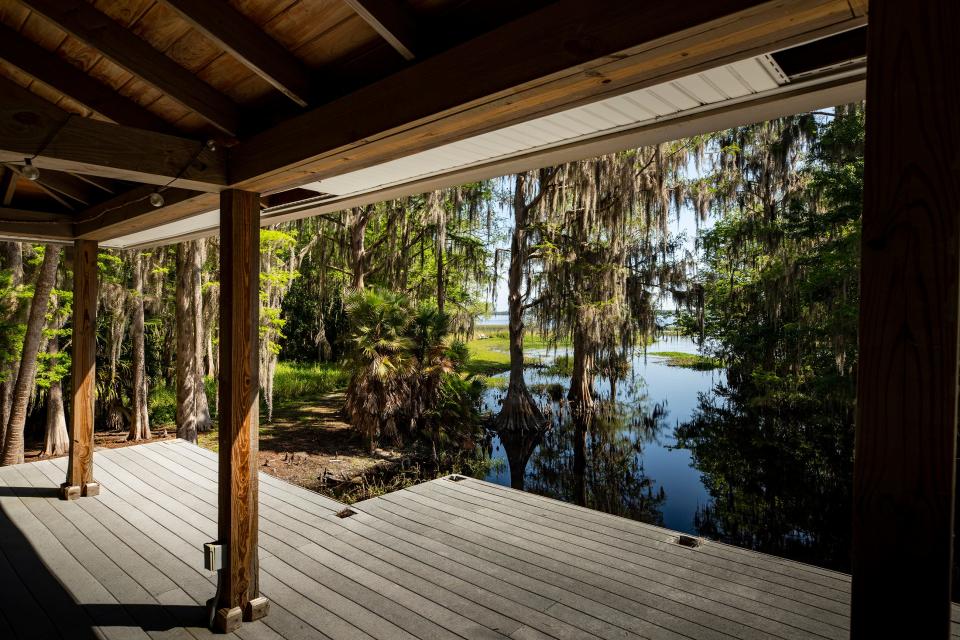
A 2,252-square-foot ranch house dates to 1950, and a larger structure for the ranch manager was built at the same time as the central lodge. Jimmy Stokes lived on the property while serving as ranch manager for three sets of owners. His widow still lives there and will also have to move.
Picturesque and serene
Entering Creek Legacy Ranch from Lake Hatchineha Road, a visitor travels an unpaved road that winds among stately oak trees, whose branches form a shady canopy. The scenery is reminiscent of many existing preserves in Florida, among them Lake Kissimmee State Park, a short distance to the southeast.
On a recent morning, Baxter, Adams and Thompson led a reporter and photographer on a tour of the property, the group split among a pair of all-terrain vehicles. Baxter still operates a cow-and-calf operation with about 240 cattle, some of whom could be seen in pastures. Horses lolled in a field dotted with yellow flowers near stables with room for 16 animals.
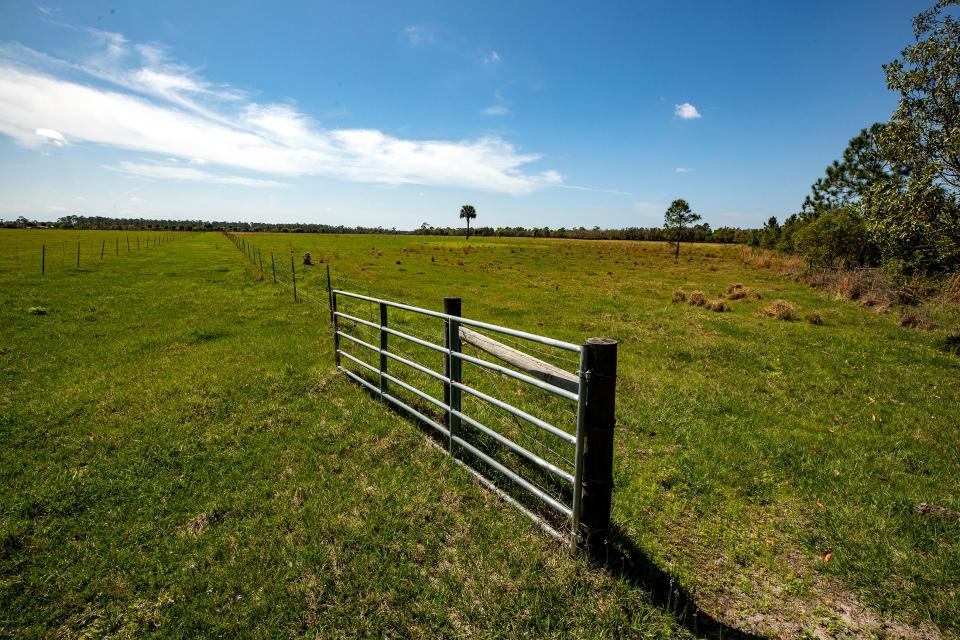
The dirt roads and trails pass through a range of habitats, much of it pinelands thick with saw palmetto. Like most large cattle ranches in Central Florida, the property contains plenty of natural wetlands that have been transformed into grassland through the building of dikes and berms and other land alterations.
Nearly half of the property is described as “improved pasture” in a management prospectus prepared by the FWC. Wet flatwoods compose nearly a quarter of the land, and tree plantations make up 10.7%. The rest is divided among a variety of habitats, such as baygall and mesic flatwoods.
Invasive, non-native plant species “do not appear to be a widespread issue” on the property, aside from the pasture grasses, the FWC prospectus states. A survey found two listed plant species, cutthroat grass and common wild pine, though the report says that others could have been missed, as the site visit occurred during a period when many plants are dormant.
As the group puttered at the edge of an open pasture, a pair of wild turkeys appeared in the distance, chugging purposefully toward Lake Hatchineha. Baxter reported regularly seeing “toms,” or male turkeys, around the pastures recently, scampering in pursuit of hens with spring mating on their minds.
Baxter, who wore a white cowboy hat, said that he shoots a wild hog and a deer on the property each year to butcher, providing a series of meals for the family, including his grandchildren.
While the state is buying Creek Legacy Ranch for its environmental value, the property also holds intriguing artifacts of human history. In a shady copse, the tour group came upon the remnants of a small mill that predated the Cocke family’s purchase of the land in 1961.
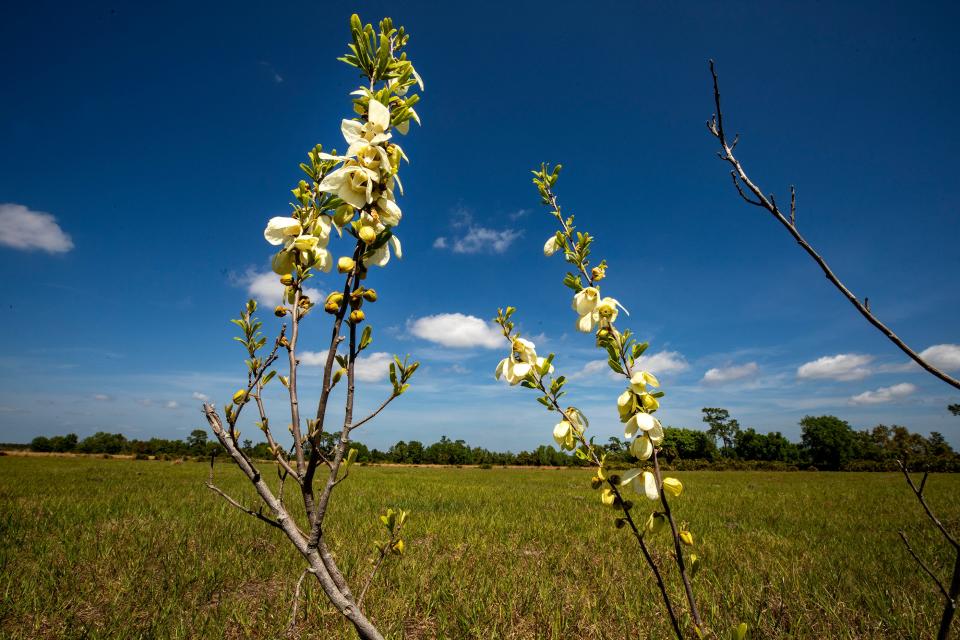
Black recalled that Bronson, her family’s ranch manager, employed a horse to walk in a circle, propelling a grinder that crunched sugar cane. The sugar then ran down a wooden chute to a cast iron bowl placed above a brick pit, which provided the heat to boil the sugar down into molasses.
The manager would then stash bottles of liquid under palmetto thickets, allowing them to ferment until they became wine, in Black’s recollection, or possibly rum.
Will become wildlife area
The Florida Forever program requires that one state agency volunteer to serve as lead manager of a property proposed for acquisition, and the FWC has agreed to take that role for Creek Legacy Ranch. The agency’s prospectus says that it would operate the property as a wildlife management area, adding to the dozens of existing tracts the FWC oversees.
Wildlife management areas are open to the public but generally lack the paved roads and other amenities of state parks. The state agency manages the properties to protect wildlife, and hunting is allowed in season.

It is possible that the FWC could alter the landscape to restore a more natural water flow. The agency makes restoration efforts as necessary and when resources allow, said Hailee Seely, public information director for the Southwest Region. The FWC is required to develop 10-year land management plans for all newly acquired properties, in conjunction with public and private stakeholders and partners, Seely said.
Within one year of receiving the property, the FWC will develop a management plan, the prospectus says. Long-range plans “would stress ecosystem management and the protection and management of locally important, rare, and imperiled species,” the report says.
The FWC estimated annual operating costs at about $80,000. In a section on revenue potential, the prospectus says that timber sales from thinning operations are an option on conservation lands, as are leases to beekeepers, if a property meets the agency’s apiary policy.
At its northwest corner, the Creek Ranch property borders Deer Lake, a 38-acre body of water. A squadron of tree swallows, small birds with iridescent blue heads and bodies, darted at high speed around the lake on the hunt for insects. Across the lake stood a block of houses, part of the Lake Deer Estates subdivision, one of many newer neighborhoods in the Villages of Poinciana.
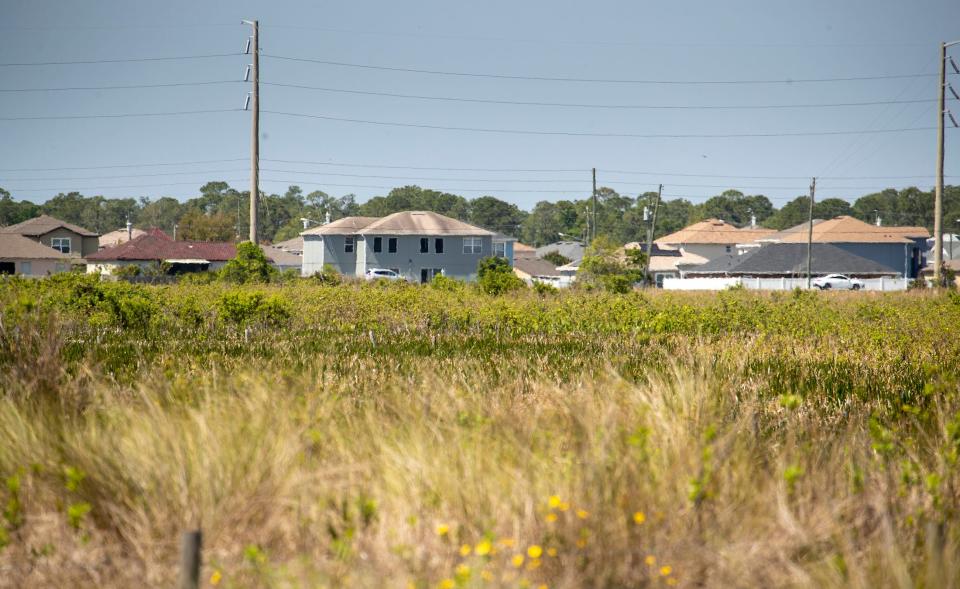
The sight offered a reminder of what might have become of Creek Legacy Ranch, or at least the western part of it.
At the tract’s western side lie about 56 acres of scrub, a habitat defined by dry, sandy soil and low-growing vegetation. Though the patch does not contain any families of Florida scrub-jay, the state’s only endemic bird species, surveys have found two other threatened species, sand skinks and gopher tortoises. A state report mentioned the presence of Florida scrub lizards.
As the group puttered along a fenced pasture, a pair of sandhill cranes took flight and winged away in almost choreographed unison. Moments later, an eastern meadowlark flitted into a pasture, offering a glimpse of the gaudy yellow feathers on its throat and chest.
At one point, a red-shouldered hawk pierced the quiet with its plaintive cry. In the wooded sections of the tract, the gentler calls of northern parulas and titmice abounded, and a white-eyed vireo sent forth its repeated, melodic phrases.
In and around the pastures, the parcel contains many mature pine trees that seemed suitable for bald eagle nests, though none were spotted. The FWC prospectus says that crested caracara, a raptor listed federally as threatened, has been observed on the property.
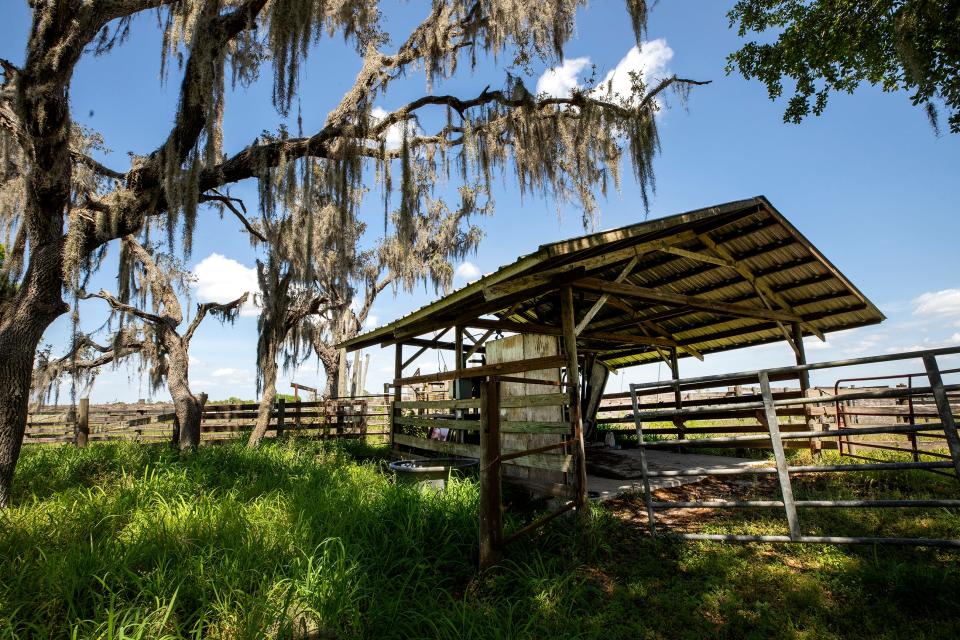
Creek Legacy Ranch holds 15.5 acres of marshes, and as the tour ventured past wet areas the loud peeping of frogs held sway. The tour traveled along raised trails passing through hardwood swamp, where sweet bay trees stood amid an understory thick with cinnamon ferns.
“This is some of the prettiest country I've seen,” said Thompson, who regularly travels the state to assess lands while negotiating conservation easements for his employer. He previously worked as an acquisition agent for the Florida Department of Environmental Protection.
Baxter said he often sees coyotes, secretive carnivores that long ago spread into Florida from western states. He shared a photo of a healthy-looking specimen taken with his phone.
The FWC maintains a map showing locations where Florida panthers have roamed, as recorded by transmissions from collars placed on the endangered cats. The agency’s telemetry map places several blue dots inside the boundaries of Creek Legacy Ranch.
Evidence of Florida black bears has also been found on the property, Thompson said.
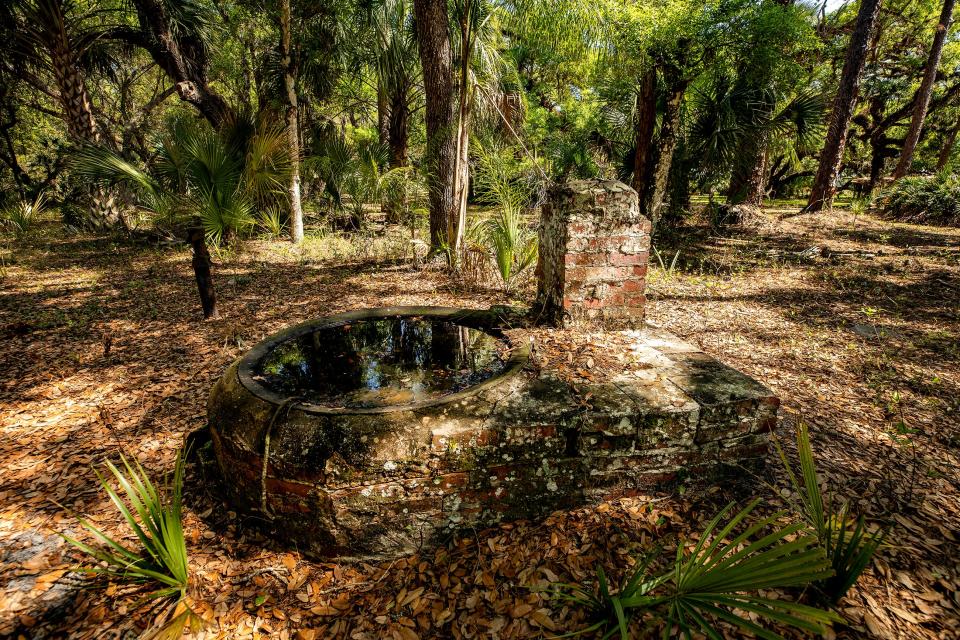
The presence of Florida’s most wide-ranging mammals signals the parcel’s value as a piece of the Florida Wildlife Corridor. Both a concept and a literal description, the corridor describes strands of contiguous, natural lands stretching north and south across the peninsula.
Prodded by conservationists, state leaders have recognized protection of the Florida Wildlife Corridor as crucial for maintaining populations of bears, panthers and other species that need to range across wide areas to maintain healthy populations.
“Creek Ranch was cited by the Florida Wildlife Corridor as a critical linkage site,” Thompson said. “Eliminating development there will provide excellent benefits for the water supply and connectivity of those corridors.”
Gary White can be reached at gary.white@theledger.com or 863-802-7518. Follow on X @garywhite13.
This article originally appeared on The Ledger: Newly preserved Creek Ranch symbolizes vanishing natural Florida

